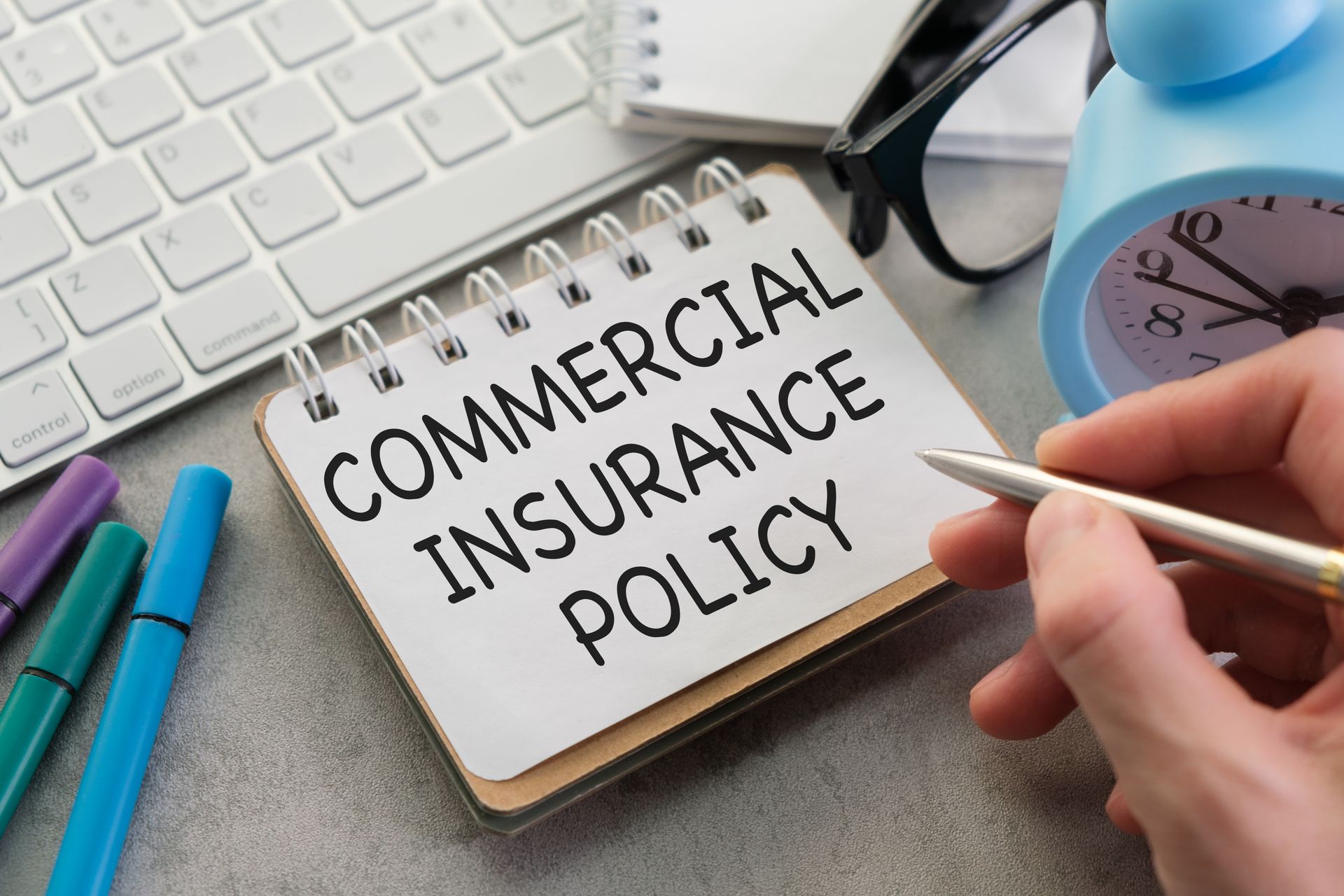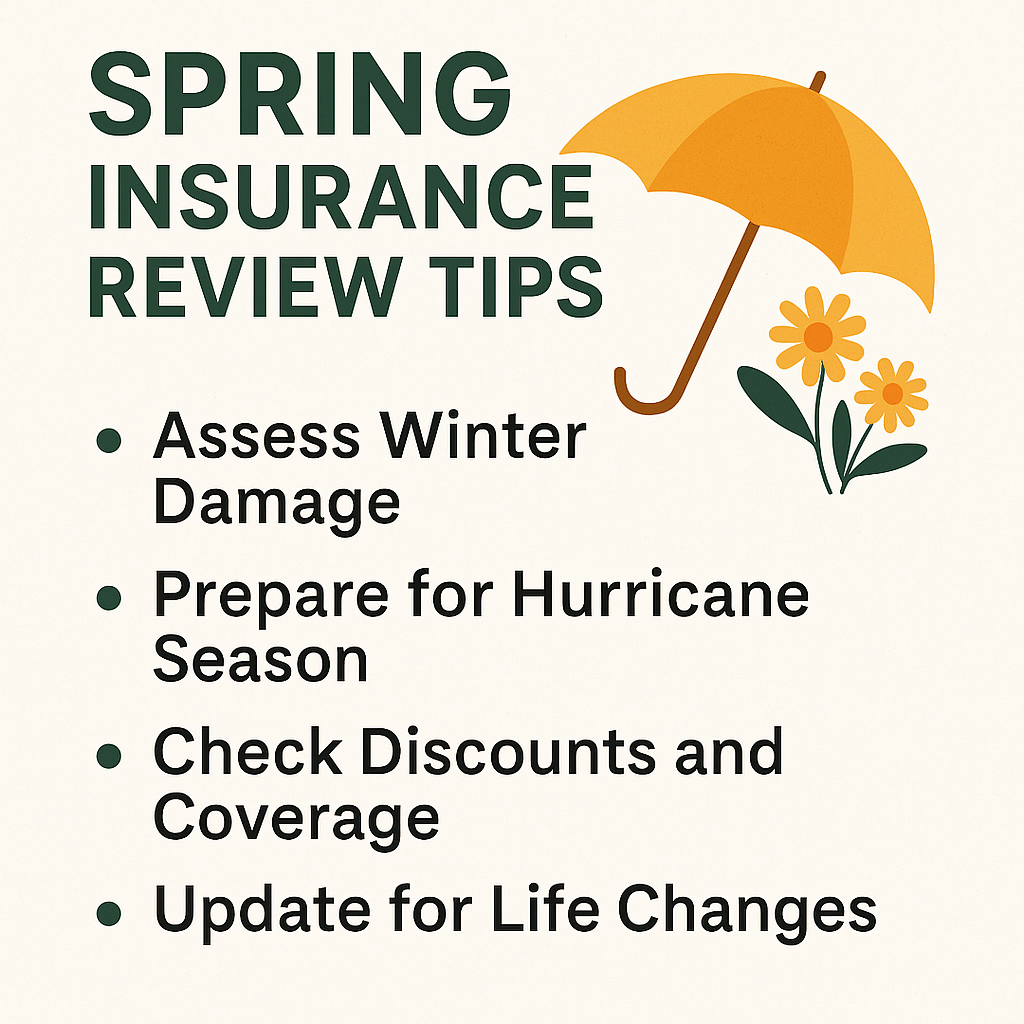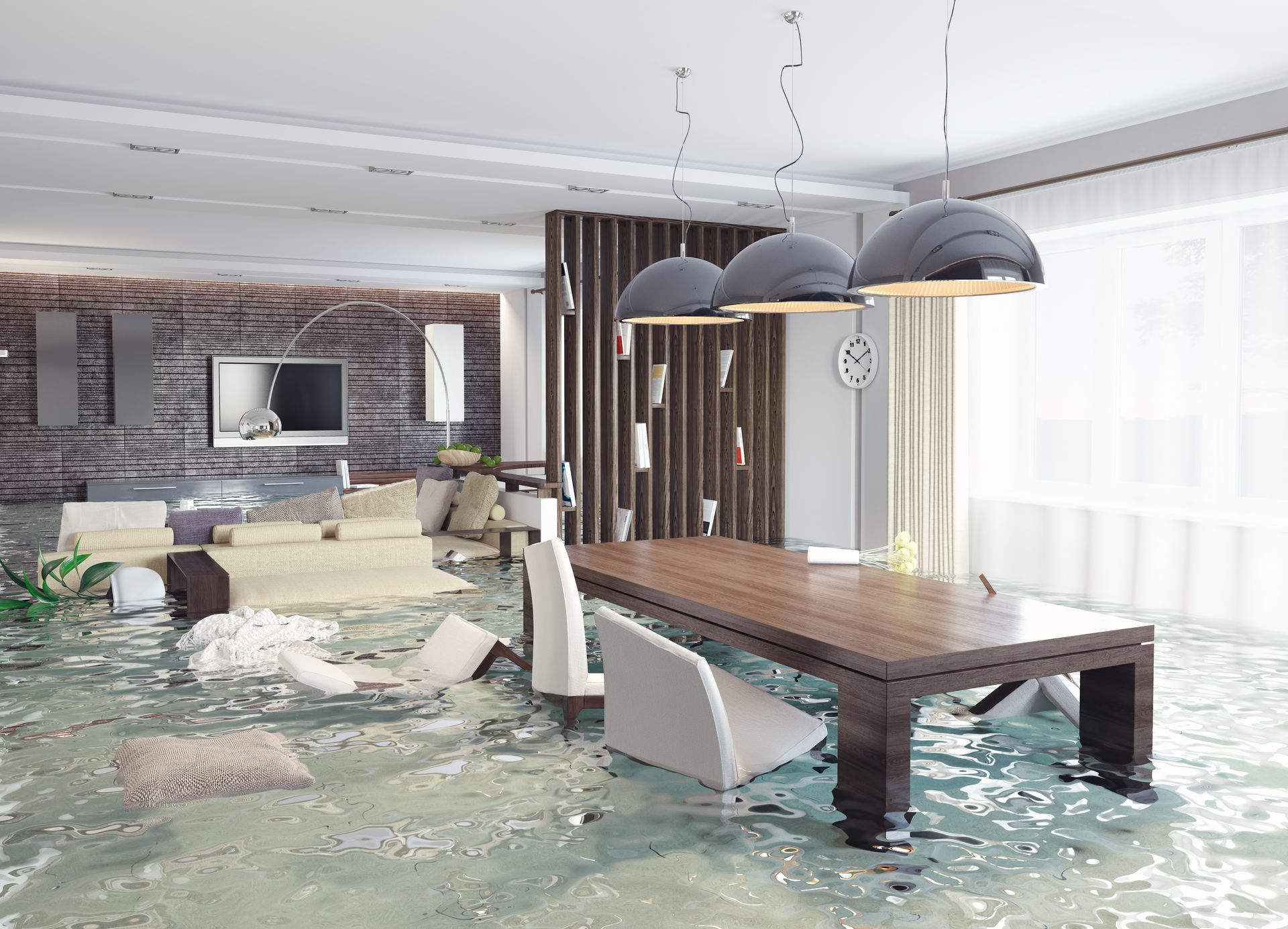
Key Points
- Standard homeowner's policies often exclude wind and flood damage—two of the most common hurricane-related losses
- Florida residents need separate windstorm and flood insurance policies for complete protection
- Your car insurance might not cover storm damage unless you have comprehensive coverage
- Many Palm Coast residents are underinsured without realizing it until disaster strikes
- Review your policies annually, especially before hurricane season peaks
- Small coverage gaps can cost you tens of thousands of dollars in out-of-pocket expenses
Living in Palm Coast means accepting that hurricanes are part of life. We've all seen the devastating footage from storms like Ian, Irma, and Matthew. The twisted metal, flooded homes, and debris-covered streets serve as stark reminders of nature's power.
But here's what separates prepared homeowners from those who face financial disaster: understanding exactly what your insurance covers before the storm hits. Too many Florida families discover critical gaps in their coverage while standing in their flooded living rooms or staring at wind-damaged roofs.
Hurricane season runs from June through November, with peak activity typically occurring between August and October. Right now is the perfect time to review your coverage, identify potential gaps, and make necessary adjustments. Don't wait until there's a storm brewing in the Atlantic—by then, it's often too late to make changes.
Understanding Florida's Unique Insurance Landscape
Hurricane insurance in Florida operates differently than in most other states, and for good reason. Our exposure to wind and water damage requires specialized coverage that many homeowners don't fully understand.
Standard homeowner's insurance policies in Florida often exclude or severely limit coverage for wind damage. This seems counterintuitive given our location, but insurance companies have learned hard lessons from decades of hurricane losses. As a result, most carriers now require separate windstorm policies or specific endorsements for wind coverage.
Flood damage presents another challenge entirely. Homeowner's insurance doesn't cover flood damage—period. You need a separate flood insurance policy, typically through the National Flood Insurance Program (NFIP) or private flood carriers. Given that Palm Coast sits near the coast and has numerous waterways, flood risk is a real concern for many properties.
The complexity doesn't end there. Different types of water damage receive different treatment under various policies. Storm surge is considered flood damage and requires flood insurance. But wind-driven rain that enters through storm-damaged windows might be covered under your windstorm policy. Understanding these distinctions can mean the difference between a covered claim and a massive out-of-pocket expense.
Your Hurricane Coverage Checklist
Use this comprehensive checklist to evaluate your current coverage before the next storm threatens our area:
Homeowner's Insurance Review
Dwelling Coverage: Does your policy limit cover the full replacement cost of your home? Construction costs have skyrocketed in recent years, and many homes are now underinsured. Consider getting a replacement cost estimate to ensure adequate coverage.
Personal Property: Review your contents coverage limits. Many homeowners focus on dwelling coverage but overlook their belongings. Make a home inventory with photos and receipts to help determine appropriate coverage levels.
Additional Living Expenses: If your home becomes uninhabitable after a storm, where will you stay and for how long? This coverage pays for hotel costs, restaurant meals, and other expenses while your home is being repaired.
Deductibles: Florida allows percentage deductibles for hurricane claims, which can be substantial. A 5% deductible on a $300,000 home means you'll pay the first $15,000 of any claim out of pocket.
Wind Coverage Verification
Separate Wind Policy: Do you have a separate windstorm policy, or is wind coverage included in your homeowner's policy? If it's separate, review the coverage limits and deductibles carefully.
Named Storm Deductibles: Many policies have higher deductibles specifically for named storms. Understand exactly how much you'll be responsible for paying before insurance kicks in.
Wind vs. Water Determinations: Review how your policy handles damage caused by both wind and water. These determinations can become complex and contentious after major storms.
Flood Insurance Assessment
Coverage Amount: NFIP policies max out at $250,000 for dwelling coverage and $100,000 for contents. If your home is worth more, consider supplemental private flood coverage.
Flood Zone: Know your property's flood zone designation. Even if you're not in a high-risk area, flood insurance might still be wise. About 25% of flood claims come from outside high-risk zones.
Waiting Period: New flood policies typically have a 30-day waiting period before taking effect. You can't wait until a storm is approaching to purchase coverage.
Auto Insurance Storm Protection
Comprehensive Coverage: This optional coverage protects against storm damage, flooding, and falling objects. Without it, you're on your own if your car gets damaged by hurricane winds or flood waters.
Rental Car Coverage: If your car is damaged in a storm, will your policy pay for a rental vehicle while yours is being repaired? This coverage becomes especially valuable when storms affect entire regions and rental cars become scarce.
Agreed Value vs. Actual Cash Value: Understand how your insurer will value your vehicle after storm damage. Actual cash value factors in depreciation, while agreed value policies pay a predetermined amount.
Common Coverage Gaps That Catch Homeowners Off Guard
Even well-intentioned homeowners often discover surprising gaps in their coverage after storms. Here are the most common oversights we see in Palm Coast and throughout Florida:
The Flood Insurance Gap
Many homeowners assume their regular insurance covers flood damage. This misconception leads to devastating financial losses every hurricane season. Even homes outside designated flood zones can experience flooding from storm surge, heavy rainfall, or overwhelmed drainage systems.
Palm Coast's proximity to the Intracoastal Waterway and Atlantic Ocean increases flood risk for many properties. Don't assume you're safe just because you haven't flooded before—hurricane patterns and intensities continue to change.
Inadequate Wind Coverage
Some homeowners purchase minimal wind coverage to save money on premiums, not realizing how expensive wind damage can be. Roof repairs, siding replacement, and window restoration can easily reach six figures after major storms.
Others purchase wind coverage but choose very high deductibles to lower their premiums. While this strategy can save money initially, it can leave you facing enormous out-of-pocket costs when storms hit.
Personal Property Limitations
Standard homeowner's policies often have sublimits for specific types of personal property. Jewelry, electronics, art, and business equipment may have coverage caps that fall far short of replacement costs.
Many homeowners also don't realize that personal property coverage might only pay actual cash value (depreciated value) rather than replacement cost. The difference can be substantial for items like furniture, appliances, and electronics.
Business Equipment and Home Offices
With more people working from home, expensive computer equipment, printers, and specialized tools are increasingly common in residential properties. Standard homeowner's policies typically provide limited coverage for business property kept at home.
If you run a business from your Palm Coast home, review both your homeowner's policy and consider separate business insurance to ensure adequate protection for equipment and potential business interruption losses.
Real-World Examples from Palm Coast Area
Understanding insurance gaps becomes clearer when you see how they play out in real situations. Here are examples based on actual claims we've handled in the Palm Coast area:
Case Study: The Flood Insurance Wake-Up Call
The Martinez family lived in a beautiful home near the Intracoastal Waterway, outside any designated flood zone. They had excellent homeowner's and wind coverage but no flood insurance—after all, they weren't required to carry it.
Hurricane Ian's storm surge pushed several feet of water into their home, causing over $180,000 in damage. Their homeowner's insurance covered none of it because it was flood damage. Without flood insurance, they faced the entire cost personally.
The lesson: Flood zones indicate higher risk areas, but they don't eliminate risk everywhere else. Many homes outside flood zones still benefit from flood coverage, especially in coastal communities like ours.
Case Study: The Wind vs. Water Battle
The Thompson family experienced damage from both wind-driven rain and storm surge during Hurricane Matthew. Their roof suffered wind damage that allowed rain to enter, while storm surge caused separate flooding on the first floor.
The wind policy covered roof repairs and water damage caused by wind-driven rain entering through storm-damaged openings. However, the storm surge damage required flood insurance coverage. Without flood insurance, they paid tens of thousands out of pocket for first-floor repairs.
The lesson: Complex storms can cause multiple types of damage requiring different insurance policies. You need comprehensive coverage to protect against all potential losses.
Case Study: The Underinsurance Surprise
The Chen family had a $200,000 dwelling coverage limit on their Palm Coast home, which seemed adequate when they purchased it five years earlier. After Hurricane Irma caused severe roof and siding damage, they discovered their home would cost over $280,000 to rebuild due to increased construction costs and updated building codes.
Their insurance covered $200,000, leaving them $80,000 short of full replacement costs. They had to take out loans to complete the repairs and bring their home up to current building standards.
The lesson: Construction costs change over time, and building codes often require upgrades during major repairs. Review and update your coverage limits regularly.
Steps to Take Right Now
Don't put off reviewing your coverage until hurricane season heats up. Here's what you should do immediately:
Schedule a Policy Review: Contact Integrity Insurance to review all your current policies. We can identify gaps and recommend improvements specific to your situation and Palm Coast's unique risks.
Document Your Property: Create a detailed inventory of your home's contents with photos and receipts. Store this information in a cloud-based system or off-site location where it won't be damaged by the same storm that affects your property.
Consider Coverage Increases: If you haven't reviewed your coverage limits in several years, they're probably inadequate given rising construction and replacement costs.
Evaluate Deductibles: Make sure you can afford to pay your deductibles if multiple claims occur in the same season. Some years bring multiple storms, and deductibles apply to each separate event.
Research Flood Insurance: Even if you're not required to carry flood insurance, consider whether it makes sense for your property. Remember the 30-day waiting period for new policies.
Review Auto Coverage: Ensure your vehicles have comprehensive coverage to protect against storm damage. Consider whether your coverage limits are adequate for current vehicle values.
Making Smart Coverage Decisions
Hurricane season preparation isn't just about boarding up windows and stocking supplies—it's about ensuring your financial protection is as strong as your physical preparations.
The key is balancing coverage with affordability. While maximum coverage provides the most protection, it might not fit every budget. Work with experienced agents who understand Florida's unique risks and can help you prioritize coverage based on your specific situation.
Consider these factors when making coverage decisions:
Your Financial Resources: Higher deductibles lower premiums but increase your out-of-pocket risk. Make sure you can afford the deductibles you choose, especially if multiple claims might occur in the same season.
Your Property's Risk Profile: Homes closer to water, in flood-prone areas, or with older construction face higher risks. These properties typically benefit from more comprehensive coverage.
Your Risk Tolerance: Some homeowners prefer maximum coverage for peace of mind, while others accept more risk to reduce premium costs. Neither approach is wrong, but you should make these decisions consciously rather than by default.
Why Professional Guidance Matters
Insurance policies are complex legal documents filled with technical language and important exclusions. What seems straightforward often contains nuances that dramatically affect coverage in real claim situations.
At Integrity Insurance, we've helped hundreds of Palm Coast families navigate hurricane claims over the years. We understand how policies work in practice, not just in theory. This experience helps us identify potential problems before storms hit rather than after claims are filed.
We also understand Florida's evolving insurance market. Laws change, coverage options evolve, and new products become available. Staying current with these changes helps ensure our clients have access to the best available coverage options.
FAQs About Hurricane Insurance Coverage
Do I need flood insurance if I'm not in a flood zone?
While not required, flood insurance can still be valuable. About 25% of flood claims come from outside designated high-risk zones. Given Palm Coast's coastal location, many properties benefit from flood coverage regardless of zone designation.
How much wind coverage do I need?
Coverage should be sufficient to repair or rebuild your home completely. This often means coverage equal to your home's full replacement cost, not just its market value or mortgage balance.
When should I review my insurance policies?
Review policies annually, ideally before hurricane season begins. Also review after major life changes like renovations, purchases of expensive items, or changes in local building codes.
What happens if I file multiple claims in one season?
Each separate storm event typically triggers separate deductibles. If two hurricanes hit in the same season, you might pay deductibles for each storm's damage.
Can I make coverage changes during hurricane season?
Most insurers restrict policy changes when storms threaten. Some impose moratoriums on changes 48-72 hours before projected storm arrival. Plan ahead and make changes early in the season.
How do percentage deductibles work?
Percentage deductibles apply to your dwelling coverage limit, not your home's value. A 5% deductible on $300,000 in dwelling coverage equals a $15,000 deductible, regardless of your home's market value.
FAQs About Integrity Insurance
What types of insurance does Integrity Insurance offer?
We provide comprehensive home, auto, flood, wind, and business insurance coverage specifically designed for Florida residents. Our team specializes in helping clients navigate Florida's complex insurance requirements.
How do I get a quote for hurricane coverage?
Call (386) 259-1000 or email info@iigfl.com to schedule a comprehensive insurance review. We're located at 5182 N Oceanshore Blvd. Suite A-1, Palm Coast, FL 32137.
Do you handle claims assistance?
Yes, our team provides guidance throughout the claims process. We help ensure you understand your coverage and assist with claim filing when needed.
Can you help me understand my current policies?
Absolutely. We review existing policies to identify coverage gaps and explain how your current coverage works in real claim situations.
What makes Integrity Insurance different?
We specialize in Florida insurance challenges and have extensive experience with hurricane claims. Our focus is helping clients understand and obtain appropriate coverage before storms threaten.
Do you offer payment plans for insurance premiums?
Yes, we work with multiple carriers that offer various payment options to make coverage affordable and manageable for our clients.
Don't wait for the next hurricane watch to discover gaps in your coverage. Contact Integrity Insurance today at
(386) 259-1000 to schedule your comprehensive insurance review. Protect your Palm Coast home, vehicles, and financial future with coverage designed for Florida's unique challenges.










